Desert Design: 10 Kick Ass Homes That Add Sophistication to the American Desert
Few places in America have architects critically engaged vernacular techniques and building traditions like the Southwest. Explored by Spanish conquistadors over 500 years ago, native inhabitants like the Pueblo have lived throughout the area substantially longer. Combining Pueblo and Spanish mission styles, vernacular elements like courtyards, adobe clay bricks, and exposed wooden ceilings have become commonplace. With sites throughout the states of New Mexico, Arizona, Nevada, and Texas, contemporary designs are exploring the diverse opportunities presented by intense desert climates. Rooted in dry environments where building materials can be scarce, modern southwest structures are emerging across the Chihuahuan, Mojave, and Sonoran Deserts.
While prestigious architects and firms like Rick Joy, Frank Lloyd Wright, and Lake|Flato Architects have completed compelling works throughout the region, new designers are proposing novel solutions to reinterpret the area’s history, culture, and values. Small in scale and distinctively discreet, these projects merge programs, landscape, and local materials to shape intimate, reflective spaces.
Residential design holds a significant place within this investigation, where year-round living and everyday demands require attention to pragmatic and functional needs. Here, modern designs examine sustainable strategies while elevating ordinary rituals and routines. The dwellings use warm colors and open layouts to play with shadows and embrace the surrounding landscape. The following collection showcases 10 projects from the Architizer database that embody the Southwest’s residences and celebrate vernacular craft.
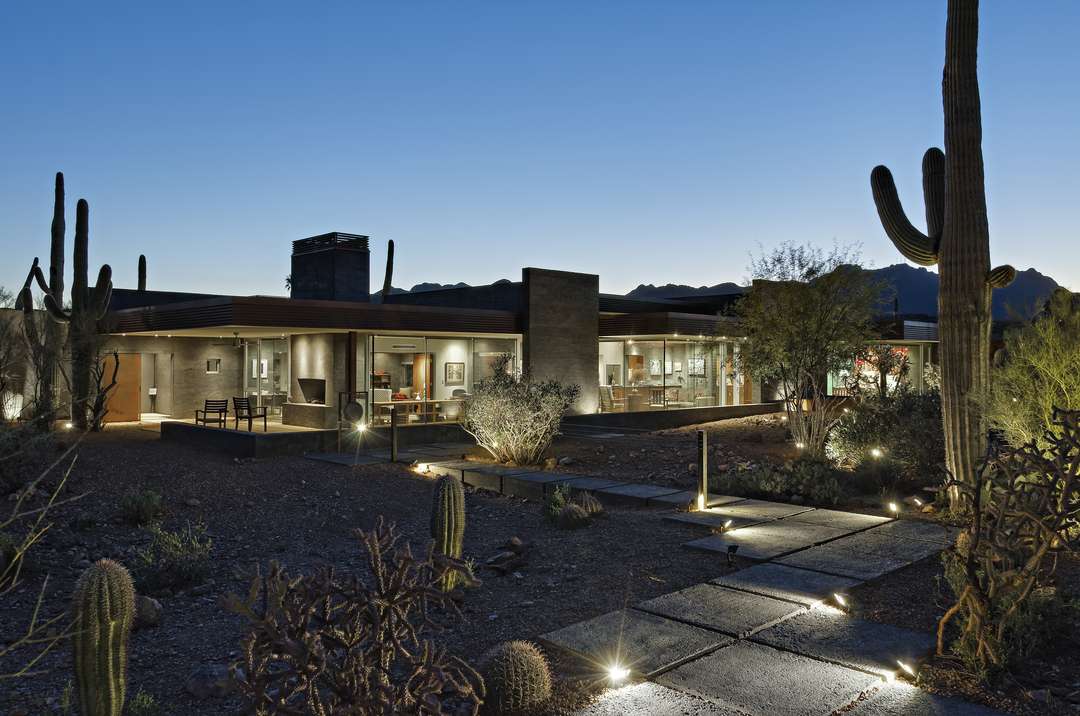

LAVA House by DesignBuild Collaborative, Tucson, Ariz., United States
Located along an alluvial flow near the Tucson Mountains, LAVA House overlooks panoramic views while anchoring spaces to the site’s geology. Formally, the project weaves rooms between desert vegetation and water courses with mass walls and floating horizontal roof planes. The project also marks a significant step in using scoria, or crushed volcanic cinder, as a material for building envelopes.

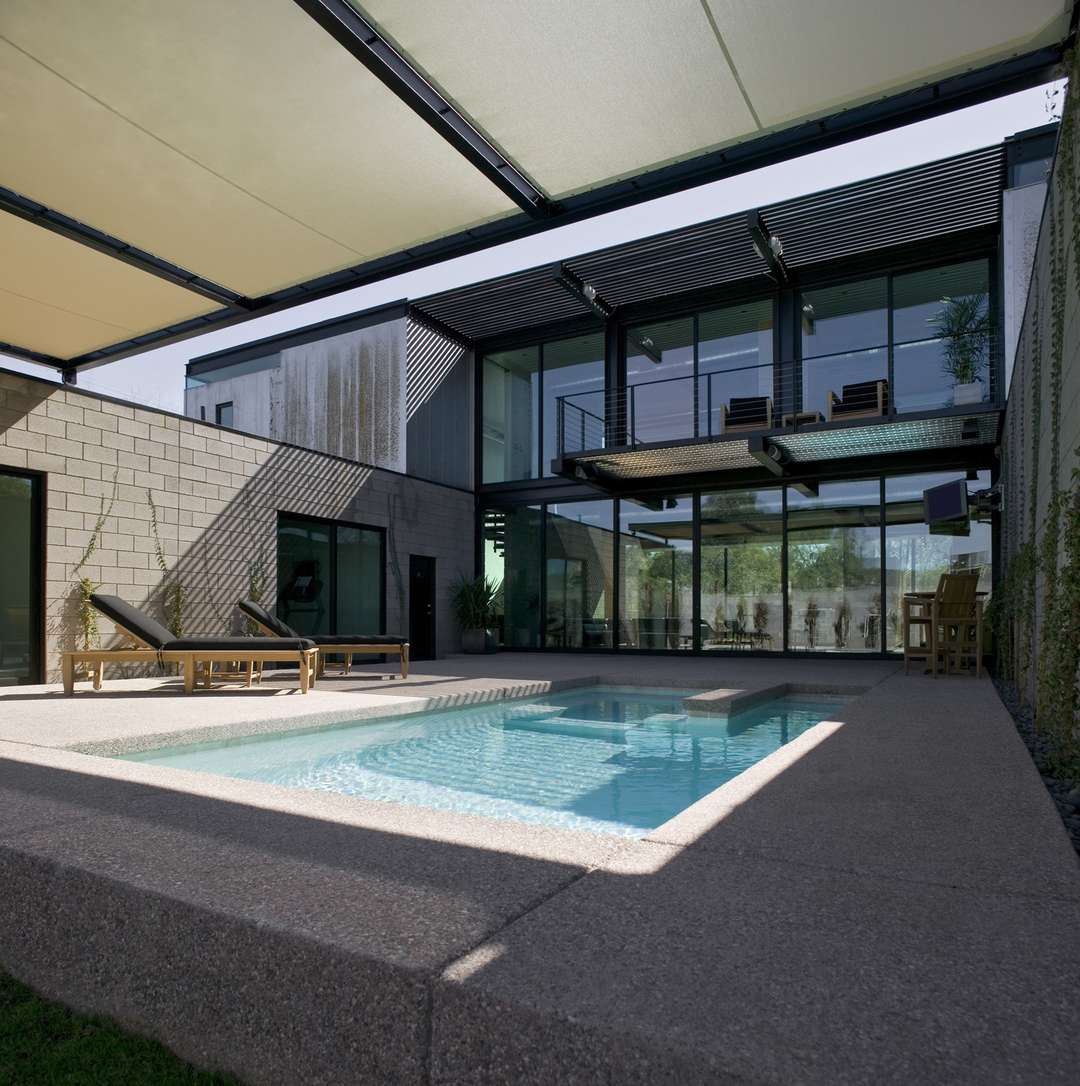
Sosnowski Residence by Chen + Suchart Studio LLC, Tempe, Ariz., United States
The Sosnowski Residence was designed using three sandblasted gray CMU walls to define courtyard space. An exposed Virendeel truss rests along the project’s upper levels, while a garage and guest bedrooms flank the building’s public spaces. A koi garden was integrated with the courtyard to help occupants embrace outdoor spaces.

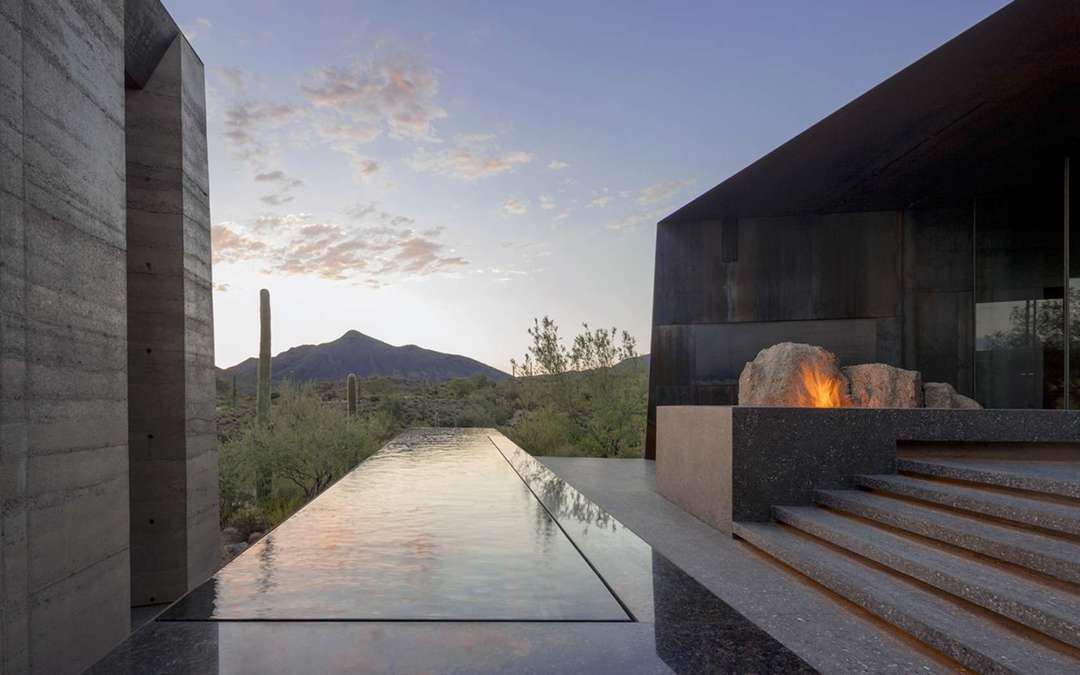
Desert Courtyard House by Wendell Burnette Architects, Scottsdale, Ariz., United States
Exploring mass and the many ways it can be defined, this desert house materializes fissures, facets, and hollowed forms. The project’s central courtyard becomes enveloped by delicate detailing, sculpted living quarters, and split volumes that combine to create the powerful design.


Marfa weeHouse by Alchemy Architects, Fort Stockton, Texas, United States
A calm, cool interior defines the simple Marfa weeHouse project. With only 440 square feet of retreat space, the remote, module house includes an outdoor shed, decks, and canopies. The residence’s stepped foundation was designed as an open platform emerging from the surrounding landscape.
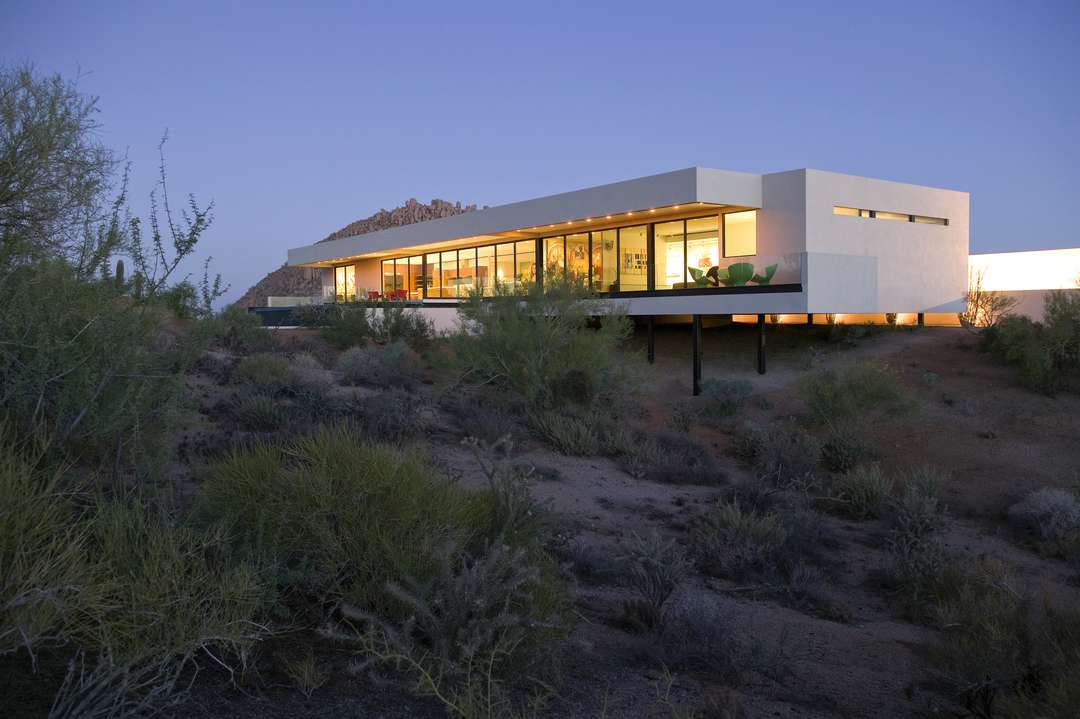

Bradley Residence by 180 degrees inc and Michael P. Johnson Design Studio, Scottsdale, Ariz., United States
Sited in Scottsdale, the Bradley residence was oriented with living spaces along a topography that drops 12 feet. Cantilevered beam supports, steel columns, and overhangs make the project appear to hover. Glass partitions were used to separate the interior while allowing views to the desert and mountains.
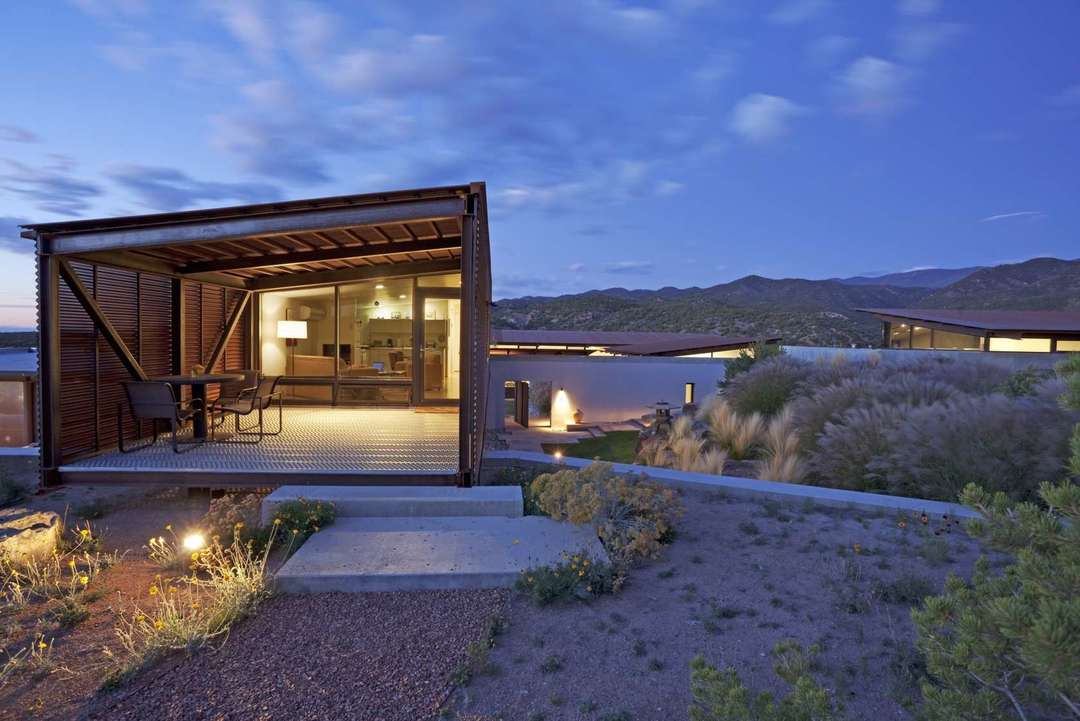

Desert House in Santa Fe by Lake|Flato Architects, Santa Fe, N.M., United States
Combining gallery space and living quarters, this desert house focuses on expansive views across the Santa Fe landscape. Contrasting low-framed rooms were designed with large vistas while the building was laid out to create courtyards within. Art display space is located in the main room and guest spaces are buried to the east and west.
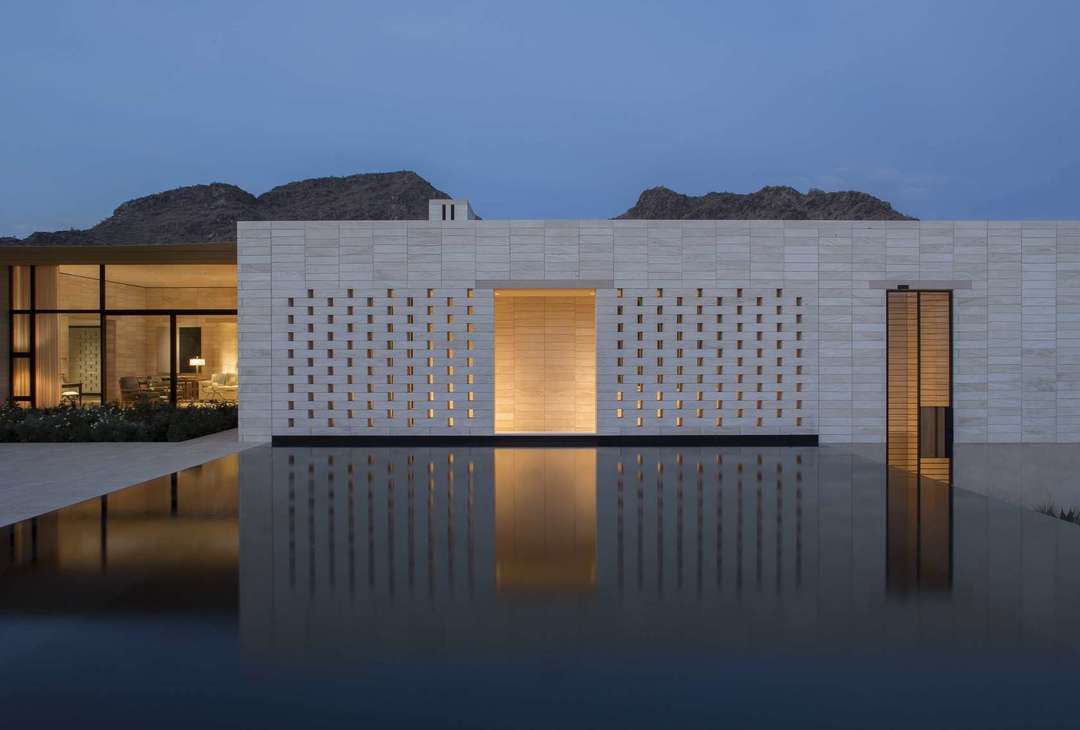
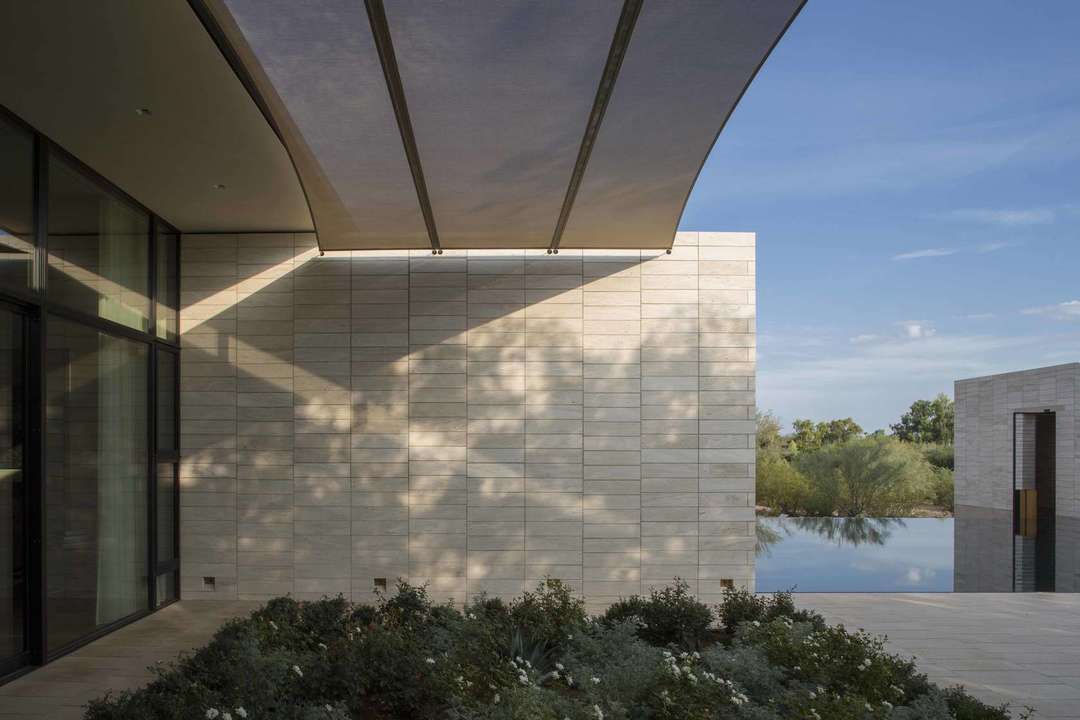
Stone Court Villa by 180 degrees inc, Paradise, Nev., United States
A Nevada residence, the Stone Court Villa was created as multiple open and enclosed spaces defined by stacked limestone walls. With varying degrees of access between the landscape and the building occupants, the villa utilizes monolithic material expression and minimal distinctive elements. The weaving stone walls help establish the circulation back and forth across open and carved spaces.
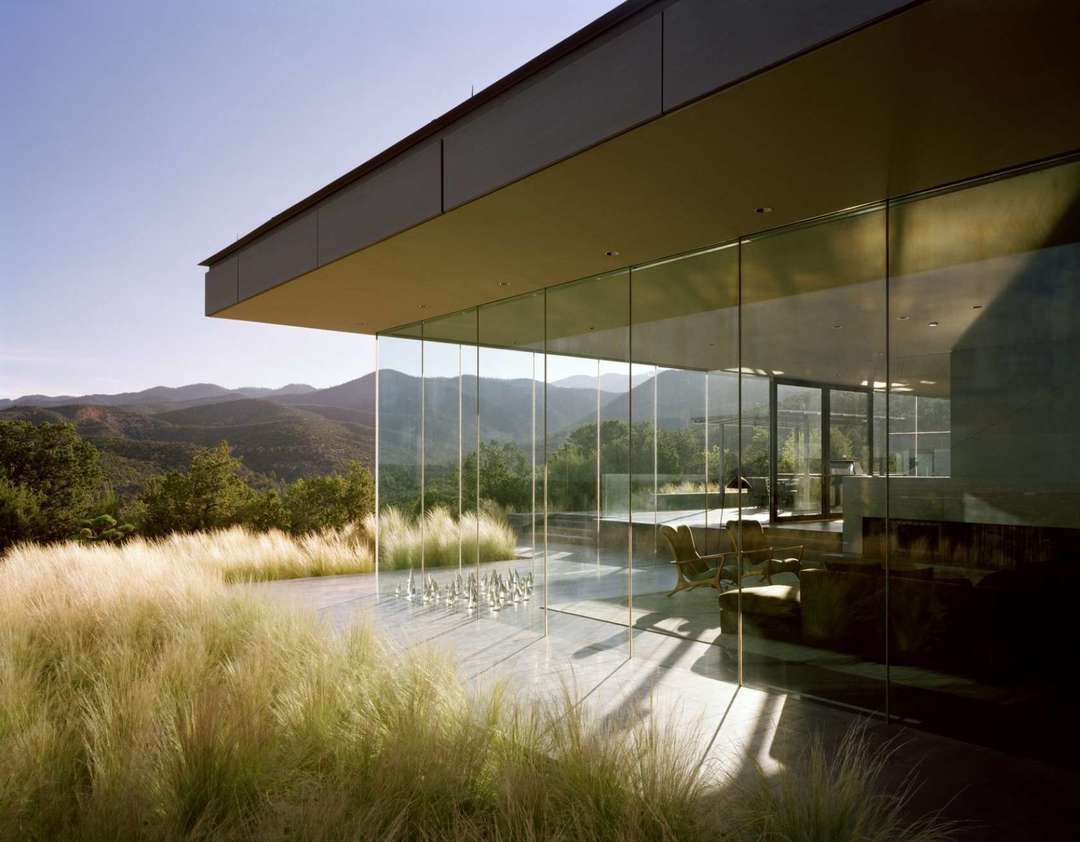
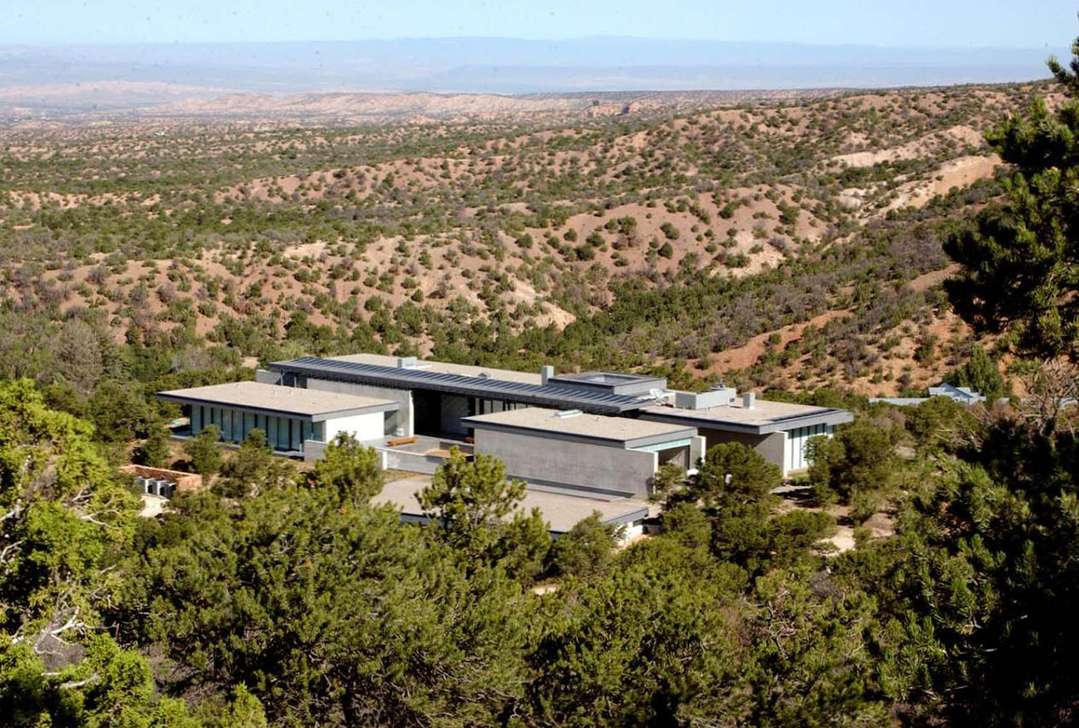
Santa Fe Glass House by Ohlhausen DuBois Architects, Santa Fe, N.M., United States
Designed to house specific works of art and living space, the Santa Fe Glass House overlooks the dramatic New Mexico landscape. The art collection includes pieces by James Turrell, Richard Serra, Donald Judd, Ellsworth Kelly, and Kiki Smith. The landscaping was carefully designed around the house to blur the boundaries between nature and art.
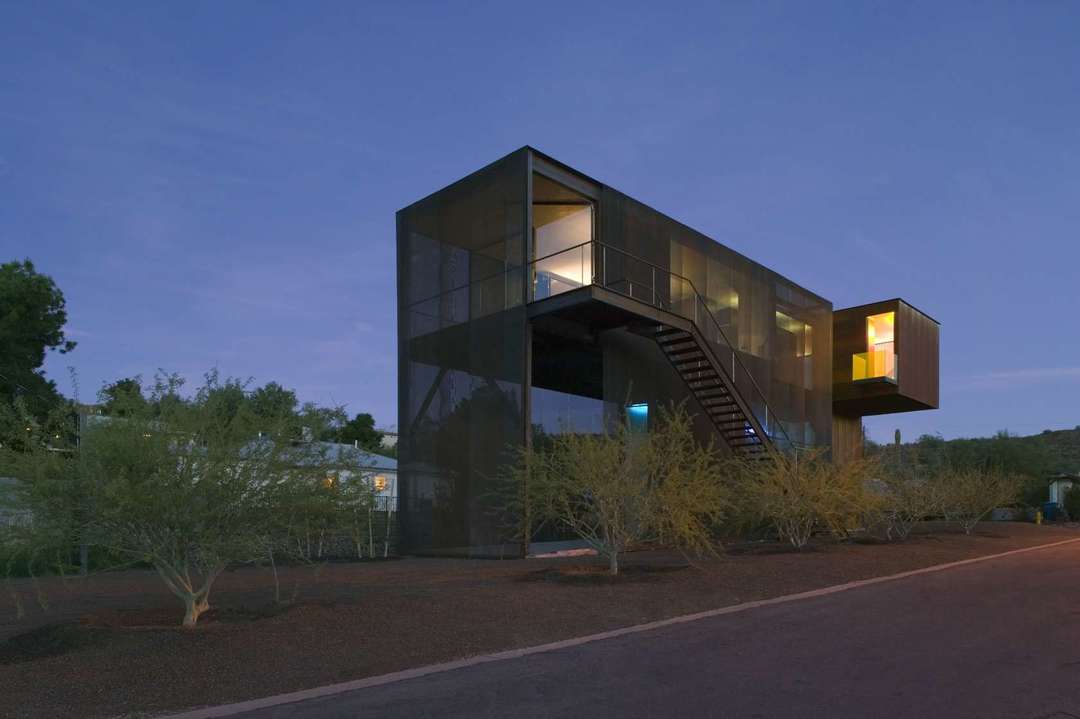
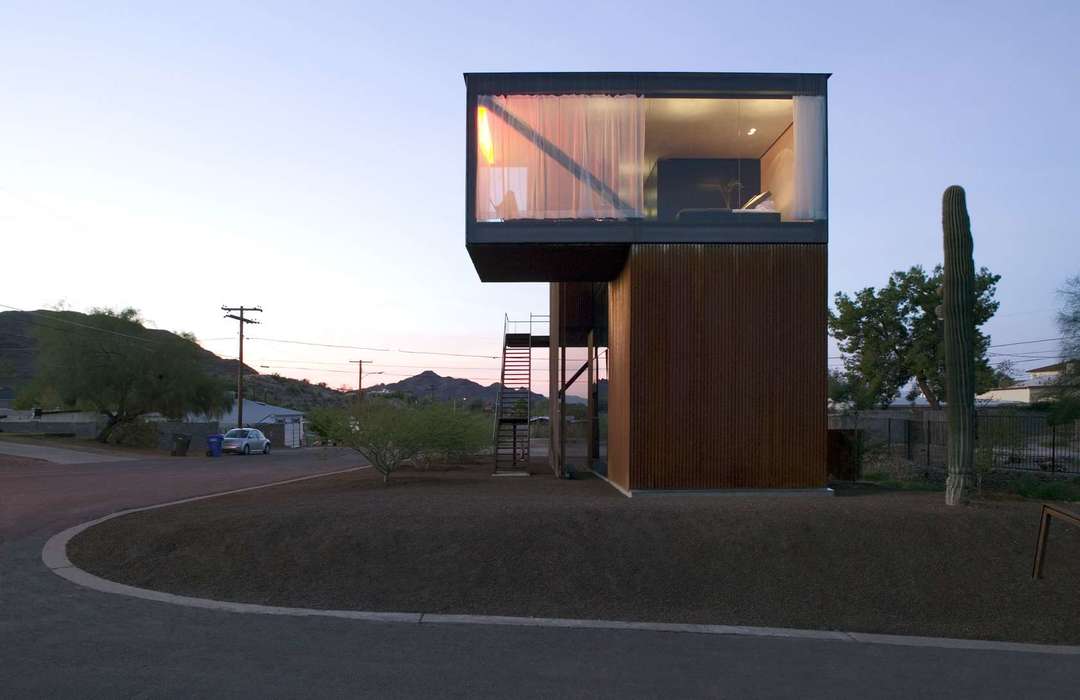
The Xero Residence by blank studio architecture, Superior, Ariz., United States
Positioned at the end of two dead-end streets, the Xero Residence rises above the street to face the north Phoenix Mountains. The two-story design includes a studio at ground level with living quarters above. Connected solely by an external steel staircase, the two spaces combine a cantilevered master suite/media room, central gallery, and a yellow-glass framed ‘Romeo and Juliet’ balcony. The house gets its name from the Greek word ‘Xeros,’ meaning dry.
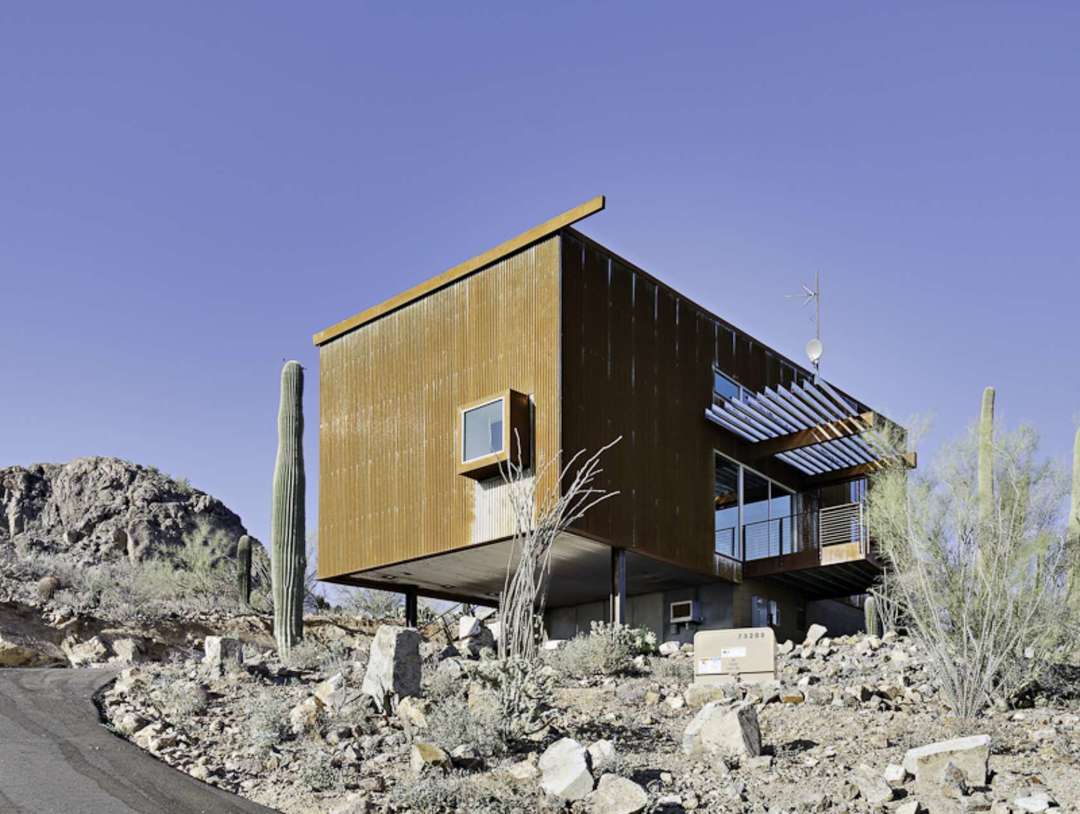

Diamond Head Mountain House by Rob Paulus Architects, Picture Rocks, Ariz., United States
The Diamond Head Mountain Residence was created as a custom retreat in Tucson. The cantilevered structure capitalizes on a loft-style floor plan with parking below. An amateur astronomer also uses the building to study the dark Arizona sky.
via Architizer

No Comments